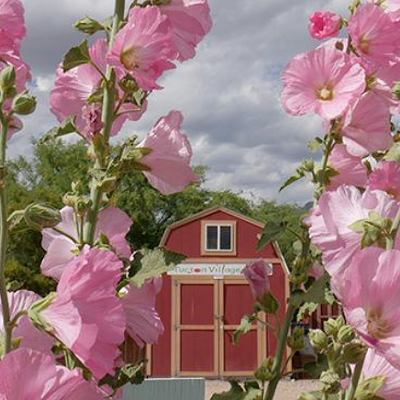May is National Preservation Month, and according to the National Trust for Historic Preservation, the focus this year is: "Old is the new green."
Supporters of the Mission Gardens on South Grande Avenue believe the proposed project is a perfect example of that theme.
"What's more green than involving and educating the community on the history of agriculture in the Tucson basin?" asks Diana Hadley, a member of Friends of Tucson's Birthplace.
For centuries, different peoples irrigated fields near the base of Sentinel Peak (or what today is called "A" Mountain by many), utilizing water from the nearby Santa Cruz River. Archeological work shows that agriculture has been practiced there for almost 4,000 years.
The Mission Gardens are intended to re-create that long agricultural history. Using different plots, the layout of the approximately 4-acre site would allow a visitor to experience how farming in the Tucson area evolved over time.
"We'll start with desert plants (cultivated by) the region's earliest settlers as well as the Hohokam and O'odham peoples," comments Bill DuPont, head of the Friends of Tucson's Birthplace. According to materials prepared for the project, these plants would include an early variety of corn, along with squash, cotton, agave and tepary beans.
Next to the Native American plots would be gardens containing the fruits and vegetables of the Mexican, territorial and statehood eras of Tucson. Plants ranging from Osage orange and barley to alfalfa, strawberries and Pima cotton would be grown.
The remainder of the site would be devoted to Spanish Colonial crops, orchard plants and vines. These are of particular interest to Jesús García, of the Arizona-Sonora Desert Museum, who is also involved with the Kino Heritage Fruit Trees Project.
"A visitor would literally be able to feel, touch and taste the flavors of those times," García observes.
García is referring to the late 17th-century period when Father Eusebio Kino helped bring European plants to the Sonoran Desert. At the same time, he met 400 Native American farmers growing crops at the foot of "A" Mountain.
Clones of some of the original plants brought by Kino and others, García says, have been identified. "It is humbling to note," he has written, "... that these plants that grow among us very likely are the living legacy of the Spanish missionaries."
Quinces, pomegranates and black mission figs are three of the primary species of fruit slated to be grown at Mission Gardens, according to García. There would also be pears, apricots, peaches, grapes and a historic Mexican sweet lime that he says was located in the Menlo Park neighborhood just north of the garden site.
The heritage-planting program García is involved with has been introduced at Tumacácori National Historical Park south of Tucson, and he hopes it will be implemented at the Mission Gardens as well.
Despite the area's rich agricultural heritage, the 20th century wasn't kind to the Mission Gardens site—it became a litter-strewn vacant dirt lot. From the perspective of archeologist Homer Thiel, returning the land to its historic usage would be appropriate.
"It would pay back the Menlo Park neighborhood," Thiel suggests, "for all they've had to go through."
That proposed transformation was part of one of the primary selling points of the Rio Nuevo downtown revitalization effort when voters approved it in 1999. But more than a decade later, and after the expenditure of $2 million, the Mission Gardens project remains unfinished.
Required archeological work on the property has been completed, and as Peg Weber of Tucson's Parks and Recreation Department points out, that information was used in the proposed layout in order to prevent the disruption of subsurface material.
In addition to archeology work, a brick wall has been constructed around the site, and some irrigation piping has been laid. Most recently, Lloyd Construction donated $12,000 in labor and resources to install mesquite wood gates.
Extensive educational materials have also been prepared, and construction drawings have been completed. "This thing is ready to go," declares Hadley of the project.
But with the focus of Rio Nuevo shifting exclusively to a downtown convention-center hotel, and taxpayer money apparently not available to finish the project, Friends of Tucson's Birthplace is looking to raise donations—and is taking a different approach to completing the effort.
An intergovernmental agreement between Pima County—which owns most of the land—and the city of Tucson needs to be approved; Weber hopes that process will be wrapped up this fall. At that point, work on the site can begin again.
"First, we need to install power and water sources," DuPont observes. "I'd like to do that by the end of the year."
After that, Hadley says of the gardens: "We want volunteer labor to plant and maintain them."
Hadley calls the change in philosophy a whole new approach. "It's based on community involvement using (planning) work that's previously been done by professionals."
Once planting gets underway, both DuPont and Hadley agree that Mission Gardens should become an attraction for visitors including gardeners, tourists and school children.
Hadley thinks there will be numerous lessons to be learned.
"How to save water, and what kind of foods sustained people of this basin," she cites as two of those lessons. "How to live efficiently in a desert environment," she adds of another, "and how we respect our heritage."
During National Preservation Month, those are lessons worth learning.











